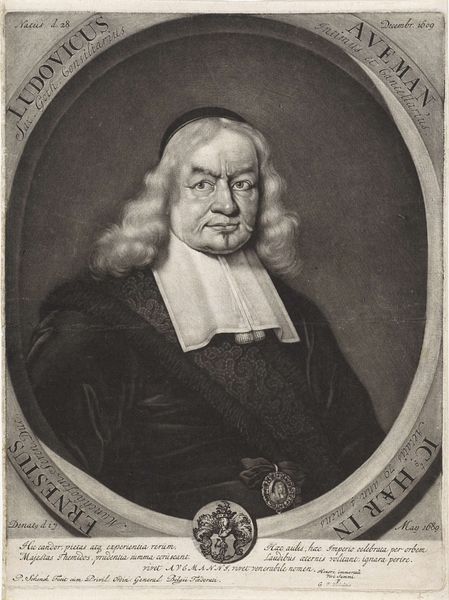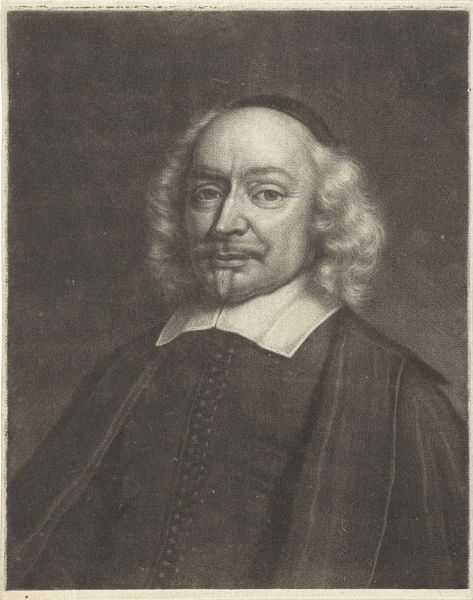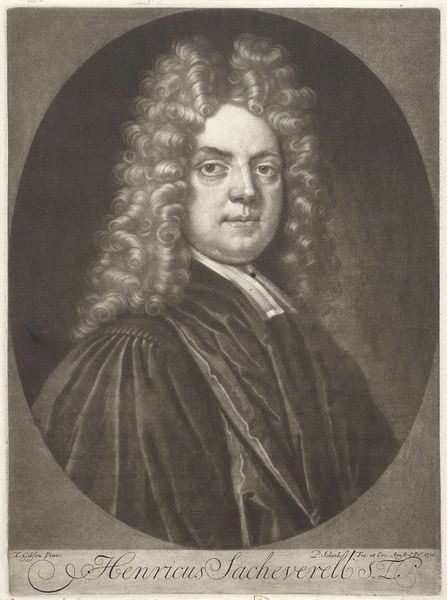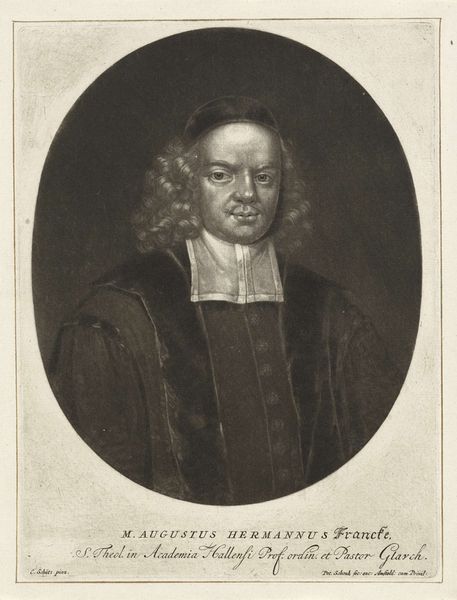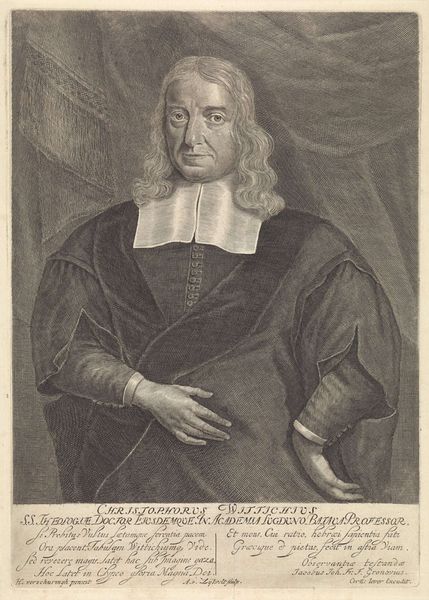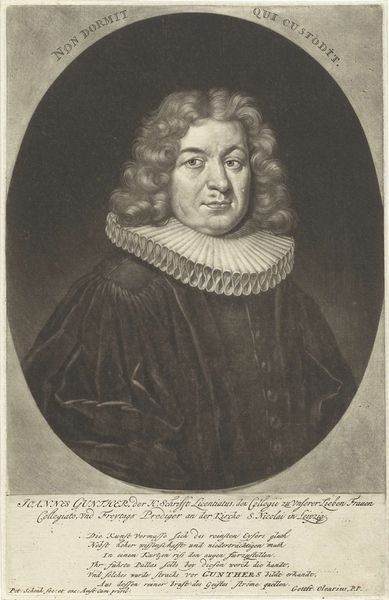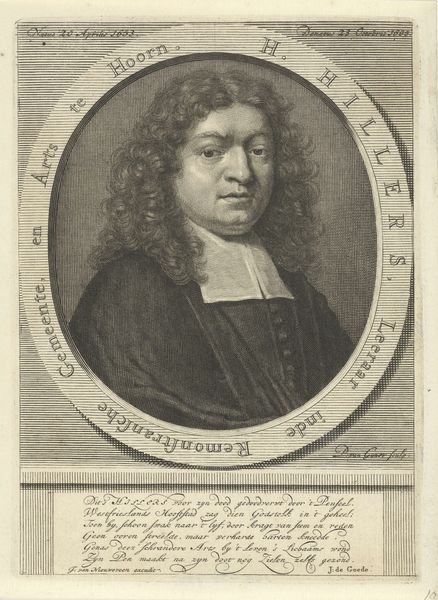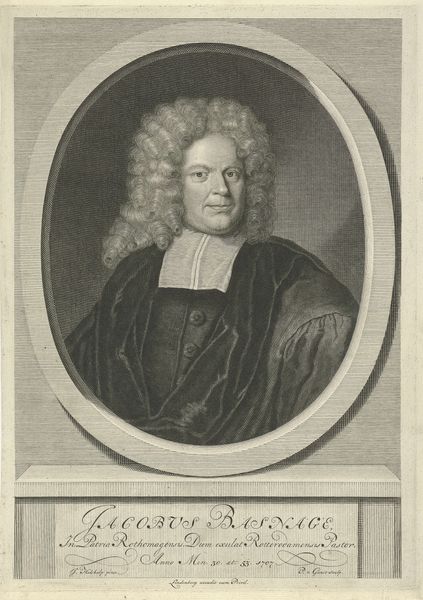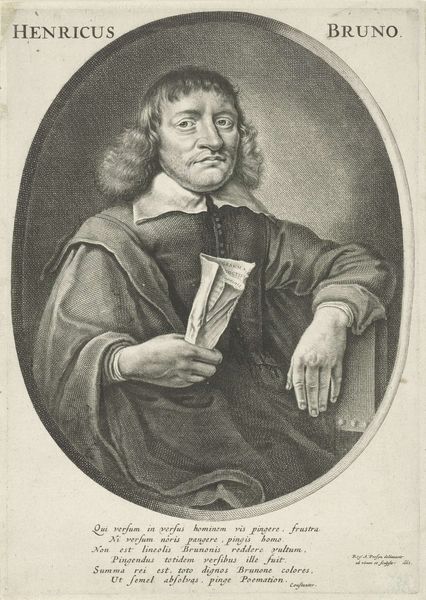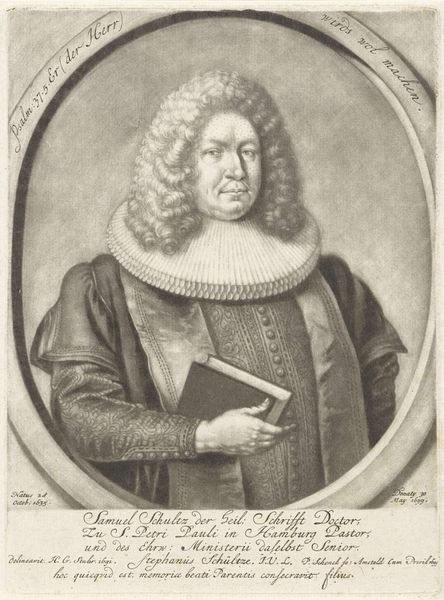
engraving
#
portrait
#
baroque
#
dutch-golden-age
#
charcoal drawing
#
portrait drawing
#
engraving
Dimensions: height 259 mm, width 175 mm
Copyright: Rijks Museum: Open Domain
This portrait of theologian Samuel Benedikt Carpzov was created by Pieter Schenk using engraving, a printmaking process with a rich history. The engraver starts with a metal plate, traditionally copper. Using a tool called a burin, they carve lines directly into the surface. The depth and width of these lines determine how much ink they hold. Ink is applied to the plate, then the surface is wiped clean, leaving ink only in the engraved lines. Paper is then pressed firmly against the plate, transferring the ink and creating the print. Engraving demands precision. The image is built line by line, with the engraver controlling every detail of tone and texture. The medium lends itself to detailed and precise imagery, evident here in the rendering of Carpzov’s face and clothing. Printmaking allowed for the wider distribution of images, playing a vital role in disseminating knowledge and shaping public opinion. By understanding the labor and skill involved in engraving, we can appreciate its historical significance beyond its aesthetic qualities, and recognize how ‘craft’ has always been integral to the fine arts.
Comments
No comments
Be the first to comment and join the conversation on the ultimate creative platform.

